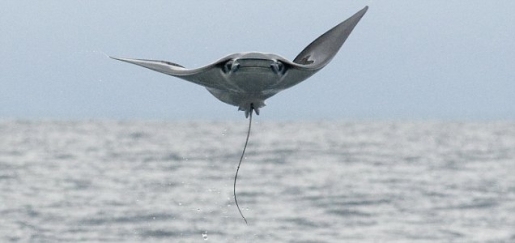Pterosaurs Across the Pacific
October 23rd, 2012 at 16:04
Long-tailed pterosaurs, called by the name “ropen,” are reported in many areas surrounding the Pacific Ocean. We now have considerable sighting evidence even in Hawaii, islands surrounded by vaste areas of the Pacific.
Two “Pterodactyls” Observed in Philippines in 2008
Once again, the last Pterosaurs around did not have tails and the biggest Pterosaurs did not have tails. The outline of such creatures these witnesses report of the broad diamond-shaped wings and body and the long stringy rat-tail plus the consistent estimartes of the wingspan at about twenty feet makes it likely that many of these sightings are actually of Manta rays leaping above the surface: in the case of creatures actually seen above the sea, the identification is pretty certain. A manta with a 20 foot span can easily leap ten feet above the surface of the sea and thus be well above the head level of a fisherman seated in a boat.

Two “Pterodactyls” Observed in Philippines in 2008
According to the eyewitness, “I think we’re not the only ones who saw it, because my classmate told me that there are sightings of this thing in Atimonan, Quezon [Province], just one-half hr travel from Pagbilao, and I was told by the local fisherman there that he saw it several times, flying above the sea.”http://www.livepterosaur.com/LP_Blog/archives/3887
. . . Question: Did the two creatures have tails?
Answer: YES! they have long tails about 3 to 4 meters long . . .it is not a bird: They don’t have any feathers.
Question: Did you have a good view of them?
Answer: Yes! I was not the only one who saw it . . .
Once again, the last Pterosaurs around did not have tails and the biggest Pterosaurs did not have tails. The outline of such creatures these witnesses report of the broad diamond-shaped wings and body and the long stringy rat-tail plus the consistent estimartes of the wingspan at about twenty feet makes it likely that many of these sightings are actually of Manta rays leaping above the surface: in the case of creatures actually seen above the sea, the identification is pretty certain. A manta with a 20 foot span can easily leap ten feet above the surface of the sea and thus be well above the head level of a fisherman seated in a boat.

